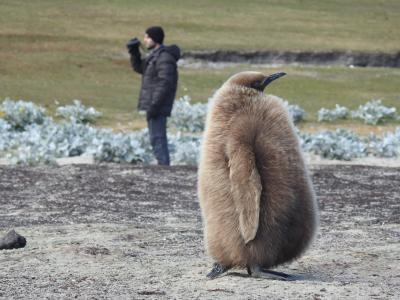Discovering millions of previously unknown potential human therapeutics

Credit: Gal Zanir for Wild Biotech
Tel-Aviv, ISRAEL – March 25, 2021 – Wild Biotech, a preclinical stage drug discovery & development company emerging out of stealth mode, today announces the publication of its first major paper, which appears in the journal Science. The study mapped the gut microbiota of animals in the wild on an unprecedented scale, adding millions of potentially novel microbiome-based therapeutics for human diseases to the company’s already massive database. Wild will use these findings to first tap its database for targets in inflammatory, immune and gastrointestinal diseases.
“For the study, we collected gut microbiota from almost 200 species of animals in the wild, covering diverse classes, feeding behaviors, geographies, and traits,” said Neta Raab, Co-founder & Chief Executive Officer at Wild Biotech. “Using de novo metagenome assembly, we constructed and functionally annotated a database of over 5,000 microbial genomes from those animals covering more than 1,200 bacterial species – 75% of which were previously unknown.”
Animals in the wild exhibit extraordinary feats of survival. Some, from hyenas and jackals to Tasmanian devils, subsist on rotting, pathogen-infected and toxic food while remaining immune to disease – possible due, in part, to their gut microbiota. While the understanding of the diversity and functions within these ecosystems is poor, the microbial composition, diversity, and functional content of animals’ microbiota have known associations with animal taxonomy, diet, activity, social structure and lifespan. “These are clues which we could tap into in order to discover entirely new agents to treat human diseases,” Raab said.
The findings reported in Science add 30 million genes – each representing a potentially new therapeutic agent – to Wild’s unique database of animal microbiota, which now comprises hundreds of animal species and 100 million genes. “The majority of that genomic material is novel, and our database introduces thousands of previously undescribed species into the bacterial tree of life,” Raab said.
Wild applies cutting-edge AI tools to decipher the therapeutic potential of its database and identify proteins, peptides, bacteriophages, and other agents with direct activity on targets in human diseases. The company’s database is unique because, unlike microbes found in the ocean or soil, the gut microbiota of animals is the most relevant and directly translatable to human therapeutics.
Wild Biotech’s database and AI tools are complemented by high-throughput synthetic biology to validate microbiome-derived agents and accelerate them into preclinical testing, and the high quality of the data extracted from microbial genomes enables the company to directly synthesize and test agents. For example, in the Science study the team synthesized a panel of previously-undescribed enzymes from carrion eater microbiota and showed that they operate on a range of microbial toxins, suggesting a mechanism that detoxifies carrion for its safe consumption by the host animal.
The company has also identified in its database over 2,000 CRISPR/Cas genome editing systems, of which approximately one third does not belong to any known CRISPR/Cas family.
“Intractable diseases require new thinking on intervention. Wild has built a revolutionary approach and the tools to explore its novel data sets, unlike any other company,” said Dr. John Baldoni, leading pharmaceutical industry expert and advisor to Wild. “You must have the data in order to do the computational work. Because of their highly evolved and relevant library, they are able to look at millions of interactions quickly, within days, and screen and target logical therapeutic areas. Wild’s approach enables a translatable workflow from its microbiome data to molecular mechanisms associated with complex diseases.”
“We are balancing innovation and clinical evidence to screen many millions of interactions with specific targets associated with human diseases,” said Raab. “We are very excited about the extraordinary potential hidden in this database for identifying entirely novel approaches to treat disease.”
###
About Wild Biotech
Wild Biotech is a preclinical stage drug discovery & development company pioneering the new emerging fields of synthetic metagenomics and microbiome-derived therapeutics. The woman-led company integrates state-of-the-art bioinformatics with high-throughput synthetic capabilities to discover therapeutic leads and accelerate them into clinical development. The company is backed by private investor Marius Nacht and venture capital fund TechBio.
Media Contact
Becky Kern
[email protected]
Original Source
https:/
Related Journal Article
http://dx.




